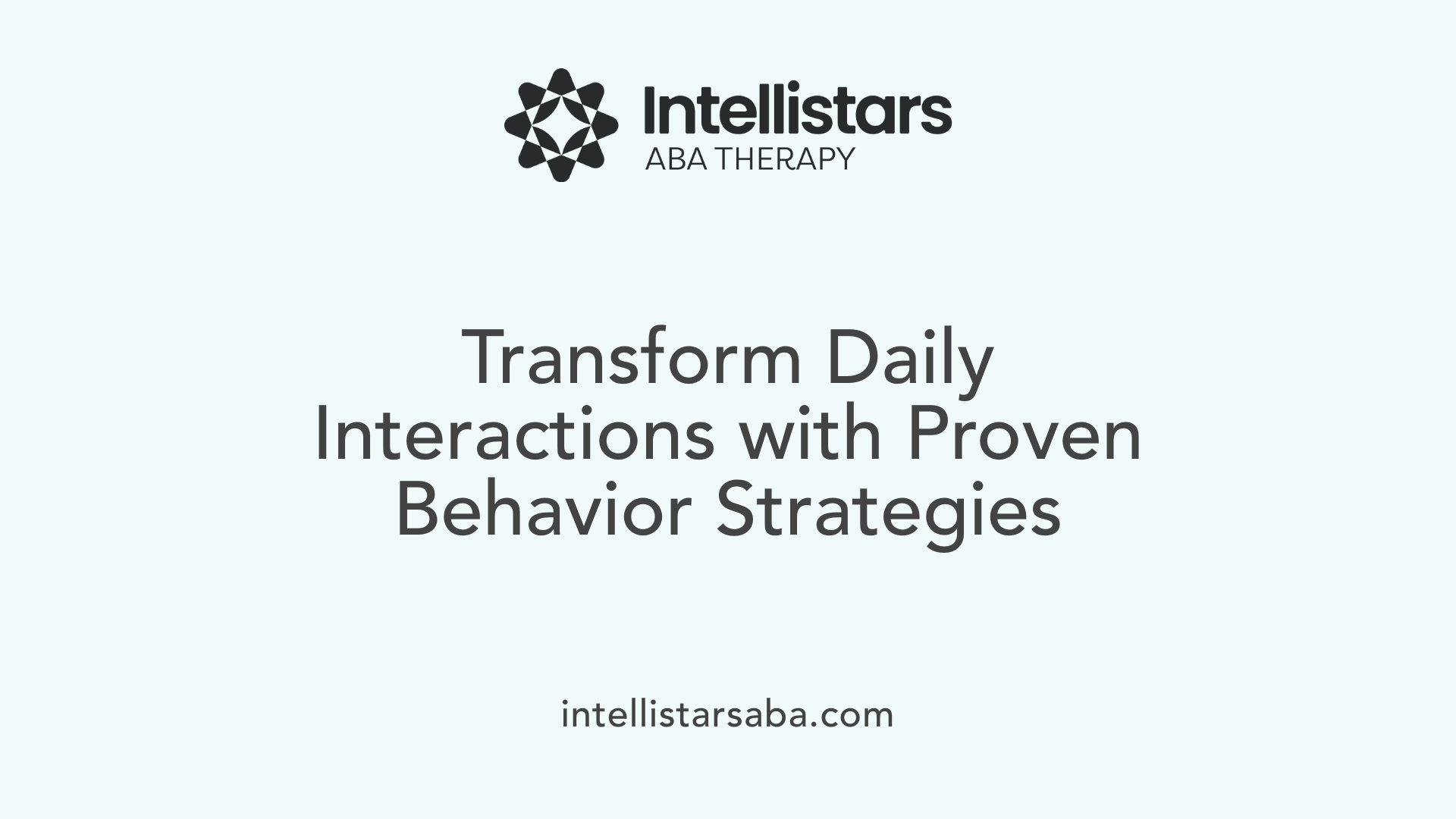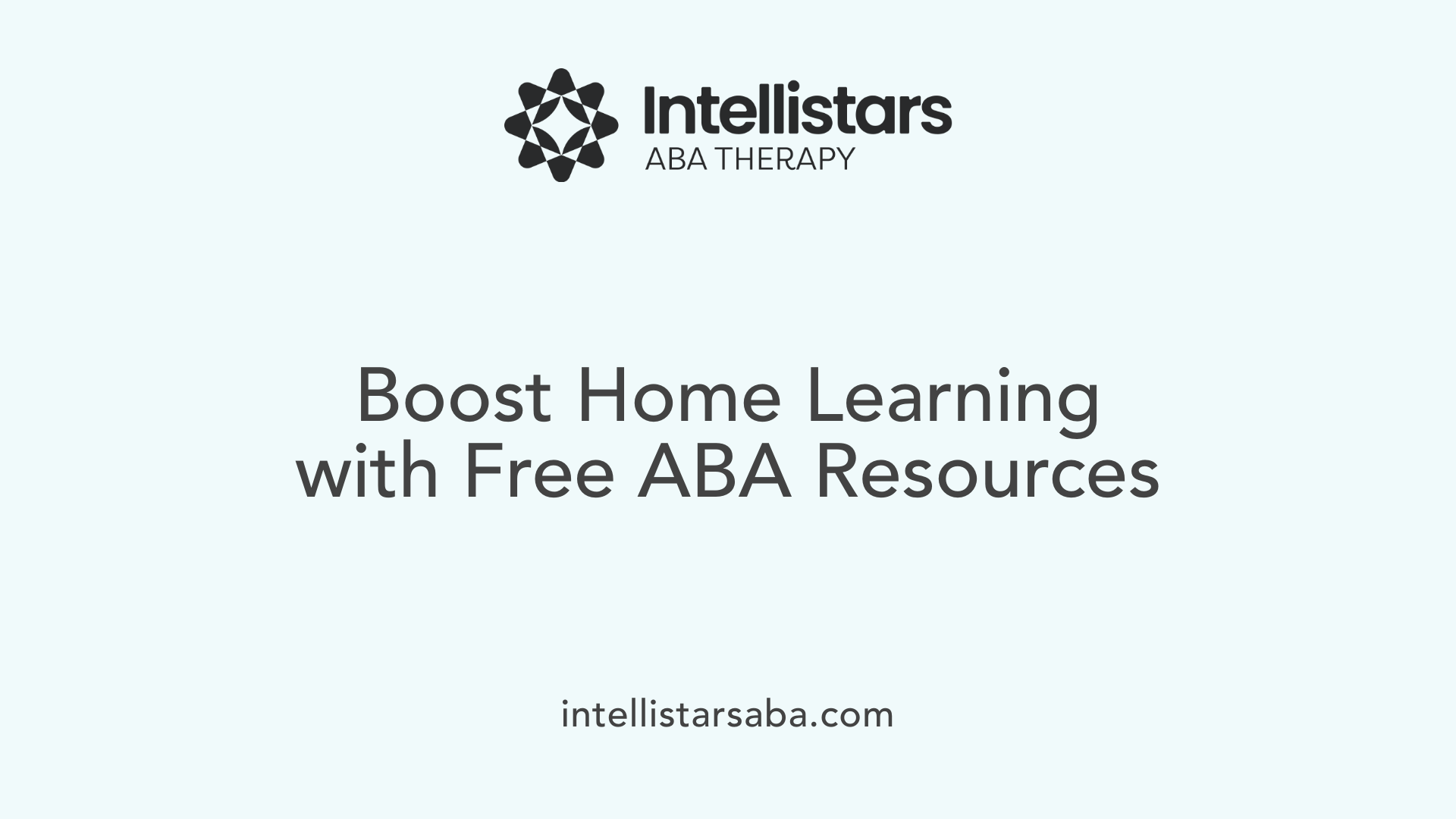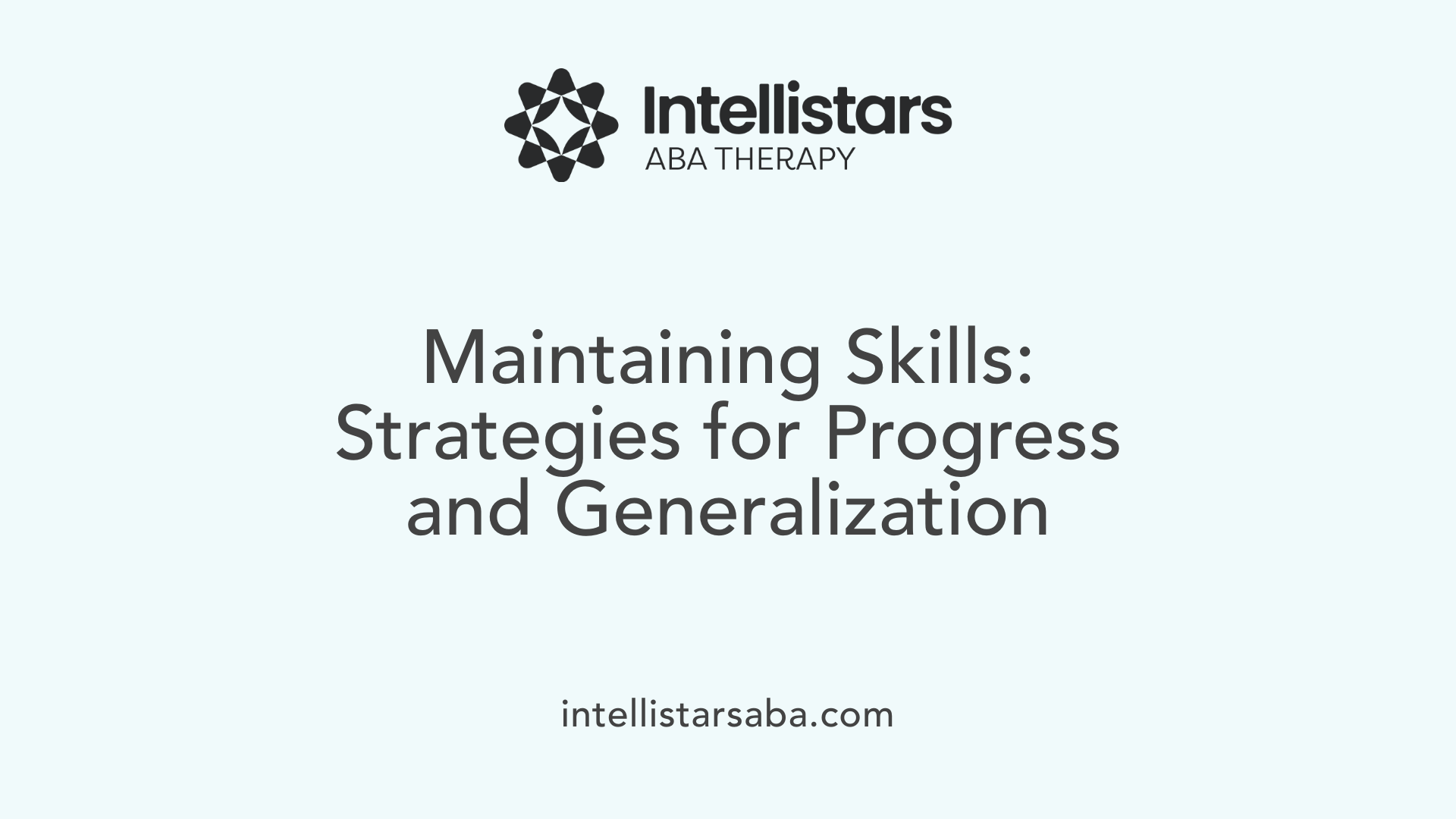Introducing Applied Behavior Analysis into Daily Routines
Incorporating ABA therapy techniques into everyday life can profoundly enhance learning, behavioral development, and independence for individuals with autism or developmental differences. As an evidence-based approach rooted in scientific principles of behavior, ABA offers practical strategies suitable for home, school, and community settings, making daily interactions rich with opportunities for growth.
Establishing Structured Routines at Home
How can ABA therapy techniques be incorporated into daily routines at home?
Applying ABA methods at home helps children develop independence and positive behaviors. One effective approach is creating consistent daily schedules for meals, activities, and bedtime. This predictability reduces anxiety and helps children understand what to expect.
Visual aids, such as charts and visual schedules, play a significant role in supporting routine understanding. These tools offer visual cues that guide children through their day, making routines tangible and easier to follow. For example, a visual schedule might include pictures for brushing teeth, reading, or playtime, which children can check off as they complete each task.
Using reinforcement strategies like praise, tokens, or preferred items can motivate children to participate in routines and develop new skills. Positive reinforcement encourages desired behaviors, making routines more engaging and rewarding.
Breaking down complex activities into smaller, manageable steps using Discrete Trial Training (DTT) helps children learn specific skills more effectively. Prompts, such as verbal cues or physical assistance, can support initial learning, while gradual fading of these prompts fosters independence.
Ensuring behaviors are reinforced across different settings promotes generalization, making learned skills more functional and automatic in daily life.
Collaboration with ABA professionals, especially Board-Certified Behavior Analysts (BCBAs), is vital. They help tailor strategies to each child's needs, monitor progress, and adjust interventions to optimize outcomes.
Implementing these ABA principles consistently at home can pave the way for more adaptive, confident, and independent children, enhancing their overall quality of life.
Applying ABA Principles to Real-Life Contexts

How does ABA therapy apply our understanding of behavior to real-life situations?
ABA therapy uses an evidence-based approach to understand and influence human behavior in everyday environments. It starts with analyzing the environmental factors that trigger or maintain specific actions. By adjusting these surroundings, clinicians and caregivers can promote healthier, more positive behaviors.
For example, positive reinforcement—such as praise or tokens—encourages desirable behaviors like communication or social interaction. Visual modeling helps individuals learn new skills by demonstrating appropriate actions through pictures, videos, or verbal prompts with visual aids.
Teaching functional communication and social skills is a crucial aspect of ABA. Therapists break down complex tasks into smaller steps using task analysis, then teach these skills through chaining, prompting, and fading. This systematic method ensures individuals acquire practical skills suited for real-world situations.
Reinforcement and modeling are utilized daily to foster independence. Caregivers might use a token system to reward a child for completing chores or practicing social greetings. Modeling behaviors such as polite manners or sharing can be demonstrated by family members or peers.
The ABA approach emphasizes personalized assessments to set achievable goals aligned with each individual's needs and family context. Ongoing data collection allows for progress monitoring and program adjustments.
By applying these methods across various settings—home, school, community—ABA helps individuals improve everyday functioning. Whether learning to communicate effectively, develop social relationships, or manage challenging behaviors, ABA principles support a more independent and fulfilling life.
| Context | Techniques Used | Outcome |
|---|---|---|
| Home | Positive reinforcement, prompting, modeling | Improved daily routines and communication skills |
| School | Visual schedules, prompting, reinforcement | Better classroom behavior, social skills development |
| Community | Role-playing, social modeling | Increased participation in social activities |
| Workplace | Behavior contracts, reinforcement | Enhanced job skills and independence |
By grounding behavior change strategies in scientific principles, ABA provides practical, adaptable tools for navigating and excelling in everyday environments.
Behavior Modification Techniques for Daily Use

Can behavior modification techniques be used in everyday life?
Yes, behavior modification methods can be highly effective for enhancing daily routines and interactions. These strategies, rooted in the science of learning and behavior, are designed to encourage positive actions and reduce undesirable ones in a gentle, sustainable way.
In everyday settings—at home, school, work, or within the community—techniques such as reinforcement, prompting, and establishing routines can help shape behaviors. Reinforcement involves rewarding desired behaviors to encourage their recurrence, such as giving praise or tokens for good listening or helping out around the house.
Prompting provides cues to initiate behaviors, while prompt fading gradually reduces reliance on prompts, fostering independence. For example, a parent might use visual aids or verbal cues to teach a child to complete chores, then slowly lessen these prompts once the task becomes habitual.
Creating consistent routines is another powerful tool. Scheduled activities and clear expectations help individuals understand what is expected, reducing anxiety and increasing the likelihood of positive behaviors. Applying these strategies regularly ensures they become part of daily life, making change more sustainable.
Reinforcement strategies including praise and token systems
Reinforcement is a cornerstone of behavior change.
- Praise: Verbal or non-verbal praise can motivate repetition of good behaviors. For example, saying “Great job cleaning up your toys” encourages a child to continue tidying.
- Token systems: These involve earning tokens for desired behaviors, which can later be exchanged for rewards like treats or privileges. Token systems are versatile and can be used across all ages.
Prompting and prompt fading for skill acquisition
Prompting provides immediate support to guide learning.
- Types of prompts: Visual cues, verbal hints, gestures, or physical guidance.
- Fading: Gradually reducing prompts helps individuals gain independence. For example, a teacher might initially give full physical assistance to write, then reduce to verbal encouragement, and finally to no prompts.
This process ensures skills are learned thoroughly and retain their independence over time.
Creating routines for consistency and sustainability
Routines help embed behaviors into daily life.
- Establish predictable schedules for activities like homework, meal time, and bedtime.
- Use visual schedules or checklists to support understanding and independence.
- Consistency in applying routines reinforces learning and reduces confusion.
Incorporating these techniques into everyday life not only improves individual behavior but also fosters a supportive environment for ongoing growth and development.
Understanding Shaping and Its Practical Application
What is shaping in ABA, and can you give a real-life example?
Shaping is a fundamental technique in Applied Behavior Analysis (ABA) used to help individuals learn complex behaviors by rewarding small steps that gradually lead to the desired skill. This process involves reinforcing behaviors that get closer and closer to the target behavior, effectively guiding learning through successive approximations.
The steps involved in shaping behaviors include identifying the final goal, breaking down the skill into manageable steps, and then systematically reinforcing each step as the individual performs it. As progress occurs at each stage, the reinforcement criteria are gradually increased to encourage more refined behaviors.
A practical example of shaping is teaching a child to wear a coat. Initially, the child might be encouraged to touch the coat. Once they do, they receive positive reinforcement such as praise or a treat. Next, stepping up, the child learns to put an arm into the sleeve, which is reinforced when done successfully. Over time, the reinforcement is given only when they fully put on the coat. This gradual process boosts confidence, motivates the learner, and makes a challenging task manageable.
Shaping is widely applicable beyond dressing skills. It is used in learning communication, social interactions, daily living activities, and even in desensitization procedures, helping individuals acquire new skills at a comfortable pace. Overall, it emphasizes patience and positive reinforcement, allowing learners to succeed step by step.
How does shaping promote effective learning?
By focusing on manageable steps and rewarding progress, shaping encourages repeated attempts and builds competence. It helps individuals gain independence and confidence, making difficult behaviors achievable and fostering a sense of accomplishment.
| Step | Behavior Demonstrated | Reinforcement Type | Importance | Example in Practice |
|---|---|---|---|---|
| 1 | Touches coat | Positive Reinforcement | Creates initial engagement | Encouraging a child to touch the coat |
| 2 | Puts one arm in | Positive Reinforcement | Builds on previous step | Reinforcing when the arm goes into the sleeve |
| 3 | Fully puts on coat | Positive Reinforcement | Achievement of the full skill | Rewarding when the coat is worn completely |
Shaping is a versatile and effective approach that aligns with scientific principles, making it a cornerstone strategy in ABA for teaching new skills and reducing problem behaviors.
Core ABA Interventions to Support Development
What are some common ABA interventions used to support behavioral development?
Applied Behavior Analysis (ABA) employs a variety of interventions aimed at improving social, communication, and learning skills. One of the primary strategies is positive reinforcement, where individuals receive rewards such as praise, tokens, or other reinforcers to encourage specific desired behaviors. This approach helps increase the likelihood that these behaviors will recur.
Prompting and prompt fading are also widely used. Prompts are cues that help individuals initiate or perform a behavior correctly. Over time, prompts are gradually removed through fading techniques, fostering independence in the individual.
To teach more complex skills, therapists often use task analysis and chaining. Task analysis involves breaking down complicated activities into smaller, manageable steps. Behavior chaining then teaches these steps sequentially, either forward or backward, until the entire skill is mastered.
In natural settings, interventions like Natural Environment Teaching (NET) and Pivotal Response Treatment (PRT) are effective. NET involves teaching skills within typical routines and activities in the child's everyday environment, promoting naturalistic learning and generalization. PRT targets pivotal developmental areas, such as motivation and response to multiple cues, to produce broad improvements.
When addressing problematic behaviors, ABA includes strategies like Functional Behavior Assessment (FBA), extinction (discontinuing reinforcement for challenging behaviors), and differential reinforcement (rewarding alternative behaviors). Communication skills are supported through tools like Picture Exchange Communication System (PECS), speech-generating devices, and Functional Communication Training (FCT), which help individuals communicate their needs effectively.
What are some common ABA interventions used to support behavioral development?
| Intervention Type | Description | Purpose/Outcome |
|---|---|---|
| Positive Reinforcement | Rewards like praise, tokens, or preferred items to encourage behaviors | Increase desired behaviors |
| Prompting & Fading | Providing cues then gradually removing them for independence | Facilitate learning of new skills |
| Task Analysis & Chaining | Breaking down activities and teaching sequential steps | Teach complex skills step-by-step |
| Natural Environment Teaching (NET) | Teaching in everyday routines using naturalistic methods | Promote real-life skill generalization |
| Pivotal Response Treatment (PRT) | Focuses on motivation and responsiveness in natural settings | Broads skills development in social and communication domains |
| Behavior Reduction Strategies | Techniques including extinction and differential reinforcement | Decrease unwanted behaviors |
| Communication Interventions | Tools like PECS, speech devices, FCT | Enhance functional communication skills |
In summary, ABA interventions are tailored to meet individual needs and often combine multiple strategies to promote meaningful progress. These approaches are supported by decades of scientific research and are effective in fostering independence and improving quality of life for many learners.
Accessing Free Resources for Home-Based ABA Strategies

Are there resources available for free ABA therapy activities and strategies for home use?
Yes, parents, caregivers, and educators can find numerous free resources online that support ABA-based activities and strategies designed for home environments. One notable website is https://anybehavior.com/ which offers a range of free worksheets, flashcards, and activity ideas specifically geared towards children on the autism spectrum. These materials focus on essential development areas such as language skills, communication, social interaction, behavior management, self-help, and cognitive tasks.
These resources are crafted to complement professional ABA programs, making it easier to reinforce learning and behavior goals consistently at home. For instance, parents can use visual aids like social stories or matching games to enhance understanding of daily routines or social situations. Moreover, many of these tools are adaptable, allowing customization to address individual needs and skill levels.
Examples of materials like flashcards and social stories
These materials serve as practical tools to teach and reinforce desired behaviors.
- Flashcards: Used to teach vocabulary, concepts, or social cues, helping children connect words with their meanings.
- Social Stories: Short, personalized stories that prepare children for specific situations (like visiting the dentist or shopping), promoting understanding and reducing anxiety.
- Visual Schedules: Structured visual representations of daily routines that foster independence by helping children anticipate and follow steps.
Guidelines for integrating free resources into daily routines
Successfully using these free tools requires consistency and thoughtful planning. Start by identifying specific skills or behaviors to target each week. Incorporate visual aids into daily activities or transition times to reinforce learning. For example, use social stories during transitions or before challenging tasks.
Maintain a routine, monitor progress, and adjust materials as needed. Always combine visual supports with positive reinforcement, such as praise or small rewards, to motivate and encourage the child. Regularly updating and rotating resources can keep activities engaging and effective.
Utilizing free ABA resources at home can strengthen the skills learned during therapy sessions, support ongoing development, and help children achieve greater independence and social success.
Ensuring Progress and Generalization of Skills

How do we monitor progress through data collection?
In ABA therapy, continual monitoring is essential to determine if the individual is making meaningful progress. Data collection involves systematically recording behaviors, responses, and skill acquisition during each session. This information helps practitioners identify which strategies are effective and which need adjustment.
Practitioners might use charts, checklists, or digital tools to track changes over time. Regular analysis of this data enables the team to set realistic goals, recognize improvements, and identify areas where the individual may need additional support. Consistent data collection ensures that the intervention remains personalized and responsive to the individual’s evolving needs.
How do we adjust strategies based on assessment data?
Once data indicates progress or stagnation, the next step is to modify teaching methods accordingly. If certain techniques are leading to desired behaviors, they are reinforced and used more frequently. Conversely, if progress stalls, the team may revisit the task analysis, change reinforcement strategies, or introduce new prompts.
Adjustments can involve increasing prompts for difficult skills, introducing more natural reinforcement, or modifying the environment to better support learning. Using assessment data to inform these decisions ensures interventions are efficient and tailored to foster continuous growth.
How can we encourage skill generalization across settings and people?
Generalization refers to the ability to apply learned skills in various environments, with different people, and during different routines. This is crucial for real-world independence.
To promote generalization, practitioners incorporate practices like practicing skills in natural settings such as home, school, and community spaces. They also involve various individuals—family members, teachers, peers—so that the individual interacts with multiple social partners.
Reinforcement is provided across different settings to strengthen skills broadly. Additionally, systematically fading prompts and cues helps the individual become more autonomous.
A systematic approach, including consistent routines and varied practice opportunities, supports the transfer of skills, ensuring that learning is both durable and versatile.
Summing Up
Monitoring progress through rigorous data collection guides the ongoing adjustment of interventions, maximizing effectiveness. Equally important is promoting skill transfer across different contexts and social partners, which is fostered through naturalistic teaching, involving various environments and individuals, and strategic reinforcement. These practices collectively help individuals with autism or other developmental challenges develop meaningful, adaptable skills for daily life.
| Strategy Sheet | Description | Benefits |
|---|---|---|
| Data Collection | Systematic recording of behaviors and progress | Guides adjustments, personalizes intervention |
| Strategy Adjustment | Modifying techniques based on assessment data | Ensures continued progress |
| Naturalistic Teaching | Practice skills in real-life settings | Promotes generalization |
| Involving Multiple People | Engaging family, teachers, peers | Enhances social relevance |
| Reinforcement across Settings | Consistent rewarding in different environments | Strengthens skill application |
| Fading Prompts | Gradually reducing prompts | Fosters independence |
Applying these methods ensures that skill acquisition is not only effective but also sustainable and relevant across a variety of daily situations.
The Role of Data and Certification in Effective ABA Therapy

Why Is Ongoing Assessment and Progress Tracking Important in ABA?
In Applied Behavior Analysis (ABA), continuous data collection is essential. It allows practitioners to monitor how well a child or individual is responding to interventions. Regular assessment helps identify whether a particular strategy is effective or if adjustments are needed.
Tracking progress using objective data ensures that goals are realistic and tailored to the individual's development. By analyzing behavior patterns over time, therapists can make informed decisions, optimizing interventions for better results.
This cycle of assessment, data collection, and adjustment is vital for achieving meaningful social and communication behaviors.
What Is the Role of BCBAs in Program Design and Supervision?
Board-Certified Behavior Analysts (BCBAs) are the professionals responsible for designing, overseeing, and evaluating ABA programs. They develop customized plans based on thorough assessments and data-driven insights.
Bears in mind, they also ensure that the therapies implemented are ethical, scientifically sound, and aligned with individual needs. BCBAs train and supervise technicians or paraprofessionals who carry out daily activities, ensuring consistency and quality.
Their expertise in analyzing behavioral data helps refine strategies, ensuring progress in areas like language, social skills, and independence. In addition, they troubleshoot any challenges that might arise during therapy.
How Can You Become a BCBA? What Resources Are Available?
To become a Board-Certified Behavior Analyst, one must follow specific educational and experiential pathways. The program at Pepperdine offers a comprehensive route that combines education, practical training, and certification.
Candidates complete required coursework, gain supervised experience, and pass a rigorous exam to earn the credential. This certification confirms that the practitioner has mastered the scientific principles of ABA and adheres to ethical standards.
Achieving BCBA certification enhances the quality of ABA therapy by ensuring evidence-based practice and professional accountability. It enables practitioners to design effective, individualized interventions that truly meet each person’s needs.
In summary, proper data collection, oversight by qualified BCBAs, and certification all play pivotal roles in delivering high-quality ABA therapy. These elements work together to improve behavioral outcomes and overall quality of life for individuals receiving treatment.
Integrating ABA into Daily Life for Lasting Impact
Successfully incorporating ABA therapies into everyday routines involves understanding its core principles like reinforcement, prompting, and shaping, alongside strategic planning and collaboration with professionals. Using visual supports, creating consistent routines, and applying evidence-based techniques such as task analysis and natural environment teaching can foster meaningful behavioral improvements. By utilizing free resources, engaging in ongoing data collection, and focusing on skill generalization, caregivers and educators can make learning engaging, natural, and effective. Integrating ABA methods into daily life not only enhances communication, social skills, and independence but also creates a supportive environment where individuals can thrive and reach their full potential.
References
- ABA Techniques: Strategies for Behavior Analysts - GSEP Blog
- 7 Real-World ABA Therapy Examples, Activities & Their Benefits
- Easy ABA Techniques to Use with Your Child
- 11 Ways to Incorporate ABA Principles in Your Daily Life
- Applied Behavior Analysis (ABA) | Autism Speaks
- ABA in Everyday Life
- Free ABA Materials | AutisticHub
- ABA Techniques: Strategies for Behavior Analysts - GSEP Blog
- Comprehensive List of ABA Interventions: Top Techniques
- ABA Therapy Examples, Definition & Techniques






